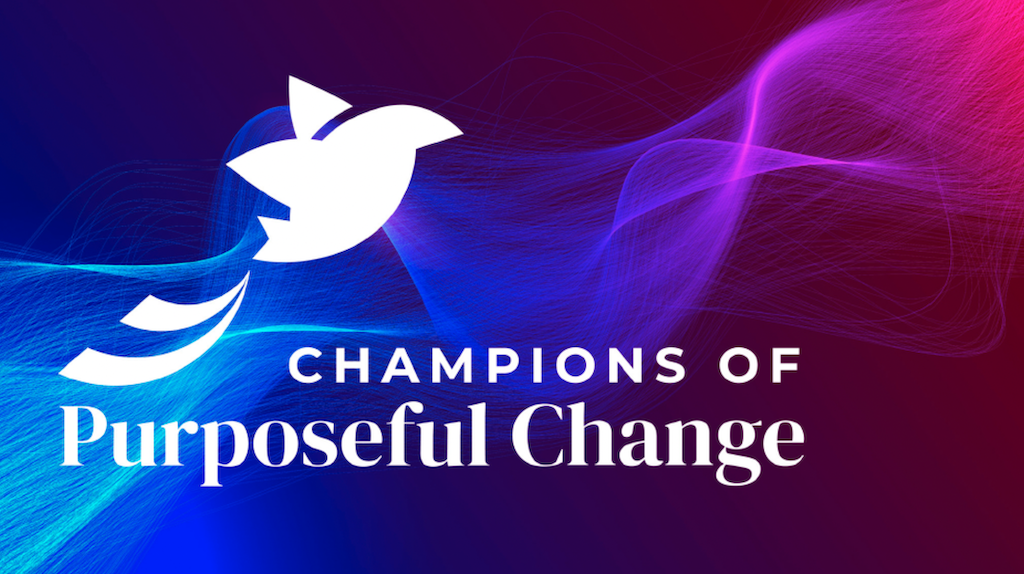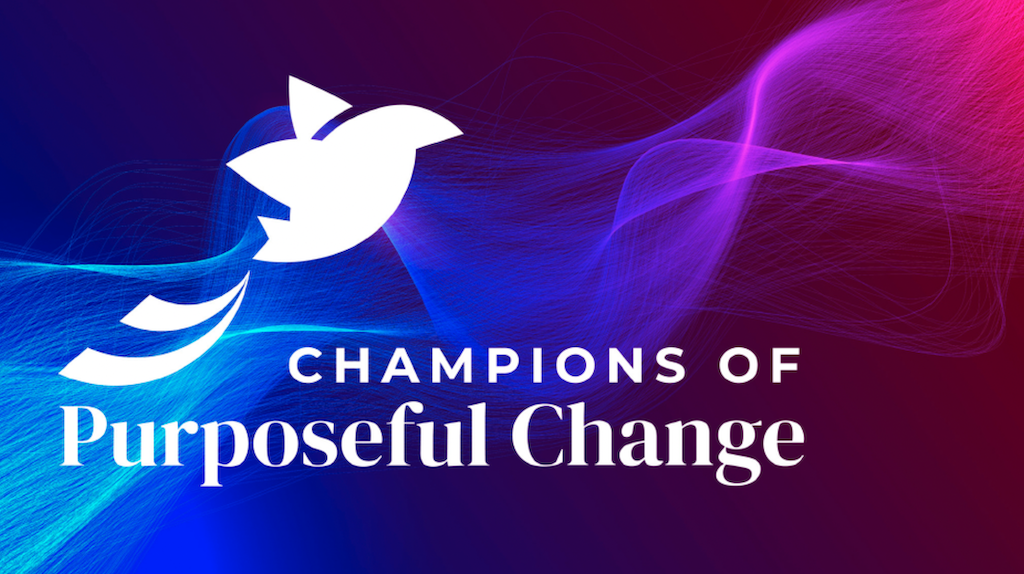Identity Crisis – Choosing the Right Brand Strategy for Your Merger

Identity Crisis – Choosing the Right Brand Strategy for Your Merger
The most fundamental brand architecture decision following and M&A event has to do with identity – the name, logo, and core message of the post-transaction company. In an M&A situation, there are 10 prevailing approaches – each with strengths and weaknesses. In this episode, we review what these options are and how to decide which approach is best for your specific situation. If you like our podcast, please subscribe and leave us a rating!
Podcast: Play in new window | Download Subscribe: iTunes | RSS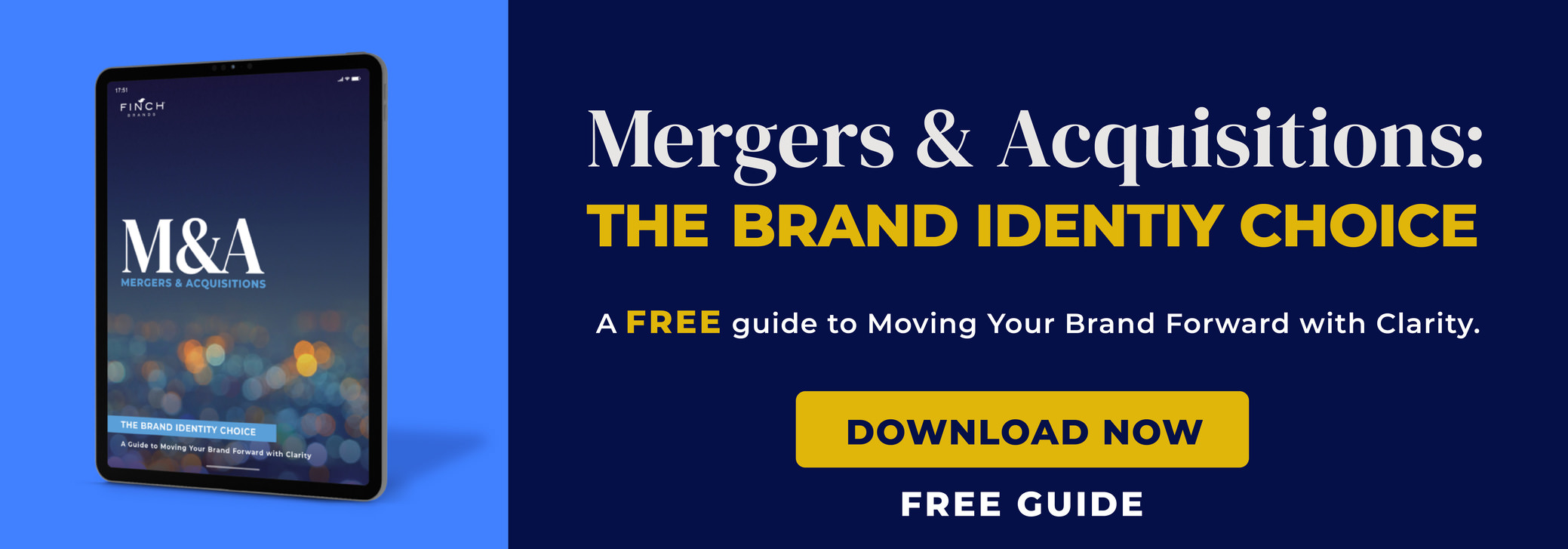
Transcription:
Bill Gullan: Greetings one and all, this is Real-World Branding. I’m Bill Gullan, President of Finch Brands, a premiere boutique branding agency, and this is One Big Idea. We’re continuing with John Ferreira, Senior Vice President and General Manger at Finch Brands, along the path of merger and acquisition based branding choices. The importance of that choice, the different options that are available to executives and then a bit about how to think about it.
To bring folks up to speed, we at Finch have been working a lot on this recently and there’s a ton of content that we’ve generated, both to support our clients as well as educate the marketplace at large. On our previous podcast discussion, John and I talked and John really led us through a sense of the importance of the signal and the symbol, in terms of brand architecture choices when a merger and acquisition happens – what’s the go forward name, what’s the look and feel and all that lies beneath that. John, welcome back.
John Ferreira: It’s great to be here again.
Bill: The fact that our offices are probably 16 paces away makes it super convenient for us to pick this up. I know we’ve been working on it a lot. Last time you introduced, at least at a high level, that when it came to the option set of how to deal with brand architecture and brand choices in the wake of an M&A situation, that there were four high level strategies. Within that, there were probably 10 total types. Of course, you did make the point that these are specific, the right choice is highly dependent upon an individualized circumstance, but that there were pros and cons of each.
Let’s take a minute to go through those 10. You had made the point, and I’ll ask you to probably start with this, that there is a continuum from that which is a bit more conservative to options that we would classify as more aggressive. Maybe we start on the conservative end and I know the first sort of option set is, I think you indicated, is making no change at all. Take us through that, what it means and maybe what an example and maybe some pros and cons of going about it that way.
John: Yeah. No change, I think on the last podcast we talked about P&G and Gillette as a great example of this. In some situations, this is the right decision, especially if you have a really well-known and well respected brand where a lot of the value of the acquisition is tied up in the brand name itself.
If you don’t make a change and you don’t actually bring them together in a formal way, all the brand equity, the value of that is maintained. For employees, things continue on, if they’re managed separately behind the scenes as well. Employees continue to feel valued and it sends a signal of continuity to stakeholders, both internally and externally.
Things that you need to watch out for is in a lot of merger and acquisition scenarios, a lot of the projected value is based on expected synergies. If you’re managing them separately, it’s going to make it harder to realize that in some cases. That’s probably the biggest potential watch out there, and those are the reasons why it may or may not be a great fit for certain situations.
Bill: Right. When there’s no change, brands maybe operate, but at the very least they’re perceived and expressed separately. The checks obviously go out to the same place and that’s one change after an M&A situation. In terms of what the marketplace sees, and even maybe how the employee base is organized or the business is organized there really is no change.
John: Yeah, I think in the case of P&G and Gillette, it made the most sense for the consumer, but they were also, even though the brands were separate, able to unlock a lot of the synergies because of the increased power with buyers, relationships with Walmart and Target, efficiencies within the selling process as well as redundancies in terms of administrative operations, etc. There’s still certainly ways to achieve the synergy piece within that scenario.

Bill: If that’s the most conservative, you’re not risking any equity, you’re not embarking upon a process that might fail. You’re leaving things alone, that’s the most conservative. On that continuum, what would you say is the next, most conservative approach, I think it’s called fusion.
John: Yeah. Really that idea is about bringing the brands and people together. It’s kind of the scenario where there’s a little bit of a warm hug, so to speak, embedded within it and a sort of a tip of the cap. There are four different types that exist within this pocket, straight fusion, refreshed fusion, hybrid fusion, and endorsed.
Straight fusion would be Exxon and Mobil coming together, ExxonMobil. Really this scenario, and most of them within this bucket, it does communicate that ‘Hey, there’s a sense of a shared future going on here.’ You’re bringing two things together, we’re going to have the best of both worlds and not to quote Hillary here, but we’re stronger together.
Employees are left feeling valued and that’s a significant risk variable in an M&A situation. If your employees don’t feel valued, they’re not going to be investing as much in their work. If they’re not investing as much in your work, I can guarantee you the customer is not going to be receiving as much value from your employees. In particular, in service based companies.
Also, in consumer companies where there’s that sort of game of telephone and sort of chain of getting to the consumer. If your sales team’s not working as hard because they’re not so sure they’re going to have a job in three months, or that the cards are not stacked in their favor, it’s going to end up affecting the consumer, etc.
Fusion definitely leaves employees feeling valued and it sends a signal of continuity as well to all stakeholders, but also to investors of, ‘Okay, management is going to be continuing on here and some of the excellence is going to be preserved.’
Some of the risks associated within these scenarios, direction may be unclear, the two brands are coming together, stuff’s going to be changing no matter what. What is changing? Is it just when two brands come together, what does the change mean that is going to be happening? There is the risk of blurring or conflicting equities. In some cases the brands might not be compatible in the eyes of the customer or the consumer, and you really have to know that before you would want to move into a fusion situation.
I think within this as well, particularly on the endorsed brand side of things, we want to think about customer alienation as well behind the scenes. If the brands are coming together, we just need to make sure we’re thinking about how are the customers going to feel? I think what’s good about the fusion scenarios though, is it’s relatively lower risk than some of the scenarios we’re going to be talking about coming up.
Bill: It does involve some change. It involves much more than no change, it involves work.
John: It does. The examples of straight fusion we talked ExxonMobil, Exxon and Mobil coming together, ExxonMobil. ConocoPhillips is another example where they brought the names together and then they created a new symbol within the mark to show that, hey something is different and this is a different feature, it’s greater than the sum of its parts, so to speak.
The hybrid approach here is Boeing and McDonnel Douglas coming together and there’s the mark from McDonnel Douglas, that symbol of the circle and that little swoosh through it with the Boeing name. This is a respect of the two companies coming together, one being the name, one being graphical.
Then endorsed is where you have a XYZ company, where there’s that certain mark of trust showing that there’s connectivity and some level of continuity within this. Situationally specific here, they are a spectrum, they’re closely related options within this bucket. It’s not no change, there is some change, but I think the overriding signal being sent is there’s going to be a lot of continuity here. More value of firms coming together, teams coming together and that accordingly, there’ll be a bright future.
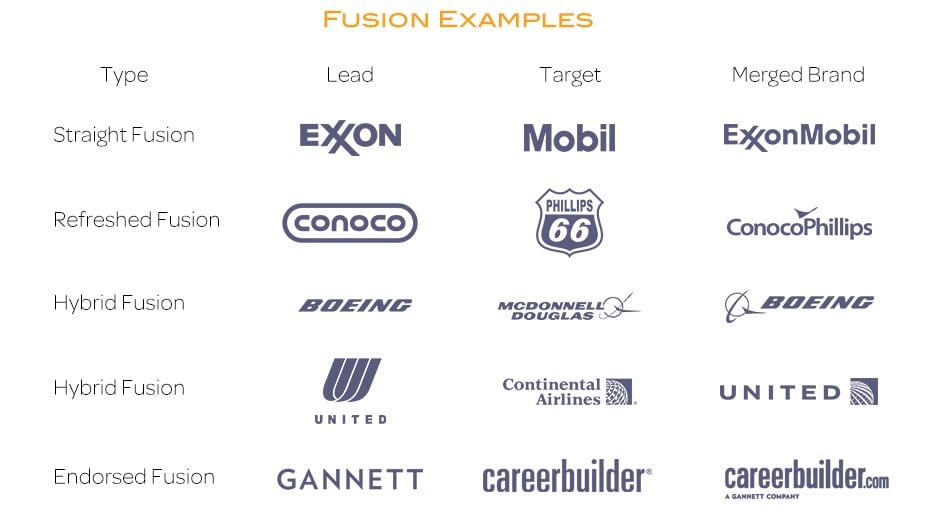
Bill: Yeah, ExxonMobil is an example, equal respect, there’s no winner, we respect the strengths of each and from a consumer perspective, if you had, and that may not be the best example, you may have strong opinions, I go to this Exxon station instead of the Mobil one for the following reasons. The brand that I chose, whether it’s the smaller or the bigger merchant partner is still there and that’s a signal of continuity.
We’re moving down the continuum here, we’re moving in the direction of more aggressive. The next sort of bucket of options, I think we’ve called stronger horse and I think there’s a couple of kinds of stronger horse, right?
John: There are, there are again four kinds, forward, which would be the acquiring brand sort of overwriting and overtaking the one being acquired.
Bill: Bigger one gobbles it up.
John: Yeah. Reverse is where you actually take the brand that’s being acquired and that becomes the new name of the company.
Bill: That’s interesting.
John: Yeah, that’s super interesting whenever that happens and sends really interesting signals. Phased is where they’re separate, you bring them both together with the plan in mind that over some predetermined timeframe, one is going to overtake the other. You have this training wheels stage in between.
Then refreshed is where one name overtakes the other, but you create a new visual identity for that name to signal that there’s something new being created by virtue of this new combination. It’s a way to send some positive signal to employees, I think in particular, where some of these stronger horse scenarios can be highly alienating to the employee base.
Bill: Sure. If you’re fighting your butt off for years to compete against, assuming sometimes, companies are in the same industry, you’re acquiring a competitor. If I work for the competitor and for years I was passionately motivated to try to beat the company that now signs my paychecks and my name goes away, the name that I fought so hard to build yet there’s a financial result for the investors or for ownership. Yeah, I can certainly see why that might be among the reasons for team member alienation.
John: Yeah, in extreme cases where there was a rivalry, stronger horse, it’s a risky scenario because you could really alienate a significant percentage of your new, expanded employee base. They may walk out the door, take the value and the knowledge and the relationships with them.
Bill: It’s easy to think, at least along those lines of some potential risks associated with stronger horse. What are the benefits of that approach?
John: It’s strong, it’s clear.
Bill: The horse?
John: It’s a horse. It’s very decisive, it’s quick, it’s efficient, it doesn’t leave that many questions unanswered. In some cases, like the reverse stronger horse, it can really help the acquirer to elevate the stature of the brand.
It helps both sides because the acquirer, like an Allied Signal acquiring Honeywell, having Honeywell was a much better known brand. Allied Signal had a great operation, but having Honeywell on the front meant something more. Then the former Honeywell employees are part of a larger organization that can do more things and has a greater weight and presence. That was sort of a win/win.
Bill: I remember one example, just that I happened to observe as a consumer because I was living in Charlotte at the time. I remember when, and this may be one reason sometimes to do reverse stronger horse if you have some baggage, frankly, that you need to shed. I remember First Union had been on an acquiring spree and they bought Wachovia, which was I think, one seventh the size of First Union, they were this little regional bank in Winston, Salem, wherever they were. First Union was this big behemoth, but they had had trouble with integration, they had alienated a lot of customers, they had developed a very negative customer service reputation.
We were all very surprised when the go forward name of that merged entity was Wachovia, which was much smaller. Maybe the thinking in the boardroom there was, this is an opportunity for us to shed some of the baggage that had been a concern at that time.
John: Yeah. That’s a really interesting situation to be in, when you’re leading a firm that’s going through those circumstances. If you have a damaged brand, it’s hard to undo the damage. If there’s the operational excellence behind the scenes, acquiring another brand that may not be quite as well known, or have quite that same reputation, but can be really well known or really well respected with the financial muscle that your firm has in place, that can be a way to dig yourself out of what might be a dangerous long-term spot of status quo with a damaged brand.
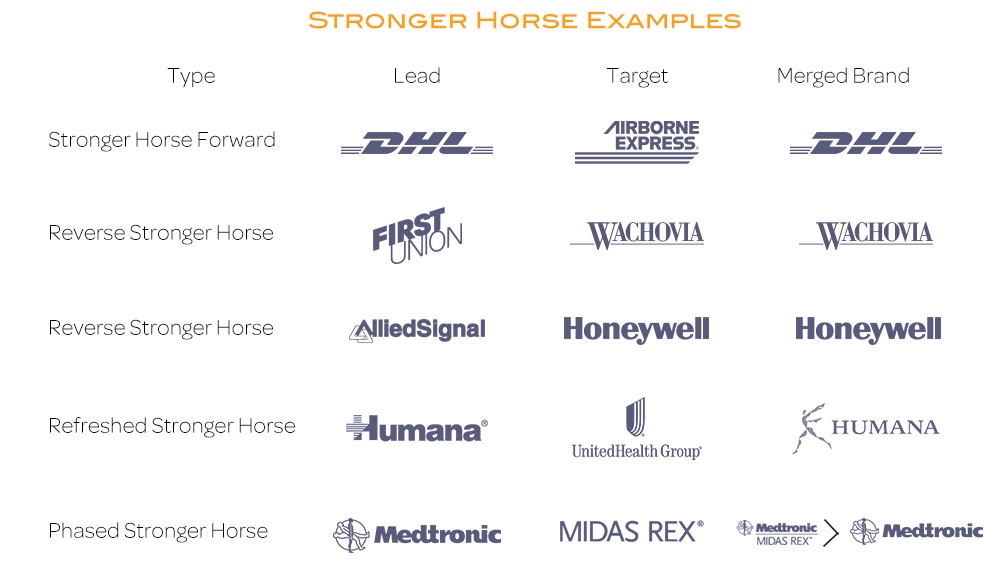
Bill: Gives you a bit of a fresh start potentially. That’s interesting, so there’s four types of stronger horse and the difference seems to be, as you walked us through, who’s in the lead share from a nomenclature and then from an identity perspective. We were talking about pros and cons, were there any other important comments about why this makes sense or circumstances where it does or where it doesn’t that are important before we move on?
John: No, I think we can move on to the next one.
Bill: Okay, and the next one as you had mentioned last time, is the far end of the aggressiveness scale, and that’s the creation of an entirely new brand. We used the example last time of GTE and Bell Atlantic, who were both regional old-line phone companies. Was GTE a baby Bell? It wasn’t call Bell, but it had the regional footprint for long distance and other forms of phone service. Talk about pros and cons of the new brand approach?
John: Yeah, in situations where you’re really trying to communicate that there’s something new here, something special here. In particular, if there are innovation messages that you’re really trying to send, this can be a good choice. There’s none of that baggage of you guys won and we lost because you’re creating something new together. It’s this interesting seminal time in the moment of the history of the company. I think leadership can use that as an opportunity to say, ‘This is something special that we’re going to be creating here together here and now.’
There are all sorts of reasons internally why that can be a great thing and in cases where your brand or the two brands might be a little out of step with the times or needing a bit of a refresh, or needing to be a little bolder, this can absolutely be a great decision. I think in terms of the watch outs here, it’s expensive to build a new brand and it takes time. To pull this off and do it well, it takes an investment and it takes some patience.
You need to be really eyes wide open of that in order to be able to pull this off effectively. That’s probably the biggest watch out. Existing, customers, it’s going to be a new brand that they’re just unfamiliar with. There could be some period of confusion where they’re getting to know it and figuring that out.
Bill: It’s funny when we think of it. At least off the top of my head, some of the examples of new brand creation, may seem to correlate with industries that are undergoing a great deal of change. Bell Atlantic, obviously, this was happening as mobile was really beginning to take over, I think in the mid ’90s perhaps or late ’90s.
One recently in the headlines was the Charter Communications acquired Time Warner Cable for, I don’t know, like $50 billion or something. They also bought, I think it was Brighthouse Networks, so there were these three different cable systems and the new name is Spectrum. I believe each of these three exists now under the Spectrum name.
Depending on who you ask, you may think there’s some brand damage there, but this is a momentous time for cable operators, and it’s a time of cord cutting and it’s a time of innovation. It’s a time where you’re facing new competitors that you never thought existed and you’re fighting to get out of that legacy, almost utility mindset. Maybe it makes a heck of a lot of sense that in those moments, nomenclature and brand level decisions, it may be a place for newness. It may be an opportunity to signal newness, at least it seems like that might be true.
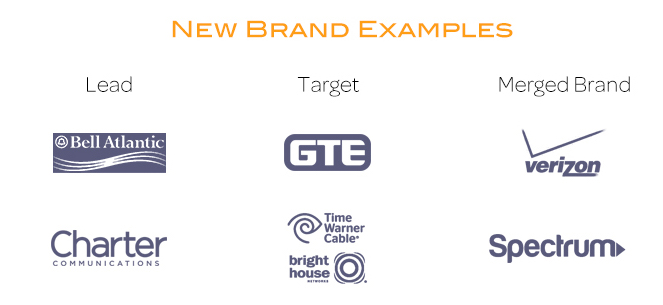
That’s an interesting separation from the conservative end of the spectrum of no change, don’t touch it, don’t want to mess it up. That’s normally how I am if one of my teams is winning, I don’t want to touch their M.O. or anything else. Don’t want to mess with the mojo. To the other end, which is something totally new, and then you have fusion and stronger horse in between. These are 10 different brand identity and architecture strategies John, that you’ve taken us through.
There are certainly seasons for everything, there’s situations for everything. You’ve made the point a couple different times that the right answer for company X and Y is absolutely dependent on the dynamics and uniqueness of company X and Y. Let’s say I’m the CEO, I’ve made an acquisition, I have to approach these choices, you’ve given me a helpful structure for what my option set is. How do I choose what’s right for me?
John: I think the first step in most of these situations, in my experience, there are people with, there are different camps within companies that have different opinions. It is a hard question to settle on your own internally. It can be done, but it takes a lot of leadership skill and being able to build bridges in order to do that.
In some cases, you have the other two management teams coming together, so it gets really hairy. I think having an objective third party that doesn’t have skin in the game one way or the other, to just show you the mirror of what your customers or consumers think. How are these brands really perceived? What’s the relative power of each of the various brands? In some cases, it’s multiple brands.
Recently we’ve been working on a project that was seven different companies in a portfolio, where its’ just acquisition after acquisition, and it’s become pretty complicated. We’ve been talking about bringing two brands together, in some cases it’s even much more complicated than that. Having an objective partner and then letting it be fact based. Taking the subjective judgment out of it and doing external research into how these brands are perceived and their relative strengths and weaknesses, as well as internally.
Talking to experts within the organizations and the people who are closest to the customer or the consumer, in particular. Some of those internal research activities send a signal themselves of, ‘Hey, management really cares and management’s trying to make the right decision for everybody. Hey, we’re all in this same boat together. Let’s check our egos at the door and let’s just see where the truth leads us.’
Certainly, taking a research based, fact based approach, and then seeing where did the insight lead you. Then making a decision accordingly with all the information available.
Bill: That seems super important because it seems as if across these 10 strategies, one of the critical decision making dimensions is the maximization of brand equity. Thus, if one seeks to maximize brand equity, one needs to first know where equity exists and the relative strength of the equity of various merger partners and market-facing identities.
I think of the specific example that you’re talking about, as well as several others that we’ve been working on together where the first step really was, ‘Okay, the deal’s closing, so let’s get into a migration strategy that makes some sense. Let’s get into maybe a six month, not holding pattern, but we have to have an answer.’
These are decisive people, fast moving markets. We need an answer for today, but immediately begin, with our help, to study the relative equities at play here, understand the strengths and weaknesses in a very clear-headed way so that we can really, as you say, let the data be our guide to where the right destination is. It seems that those insights and that marketplace data and fact based, as you say, is a critical ingredient for decision making.
John: It is, because it’s a very emotional decision and it’s a decision that has a lot of emotional impact. I think what we seek to do when we do this work is to take the emotion out of the equation internally, by having it be a window into what are the emotional factors externally, within your customer base or the consumer base? Holding that mirror up and also taking the employees’ emotional aspects into consideration so we can let executives know, ‘Hey, in some cases, this might be the right decision for the external marketplace, but you better watch out because you have a landmine with your employees.’
Bill: Sure.
John: These are very complicated situations in every dimension. And certainly operational integration, although there are certainly firms that can make that stuff easy, I think what I hope that leaders take away from the message we’re trying to deliver is that the branding side of things is much more complex than they might have realized.
With a thoughtful approach and an objective third party that knows how to do it right, they can make it much simpler and painless and make the right decision that’s going to help them to maximize the value as well.
Bill: Yeah, talk about objective third party, I can remember one example recently, where we were the choice of partner, almost entirely because, yeah we’re smart and we get it, but nobody knew us. We weren’t going to be anybody’s guys, around that boardroom table.
John Ferreira, Senior Vice President, General Manager at Finch Brands, thank you so much for your time.
John: Actually,
Bill: Yeah.
John: Before we close …
Bill: Before we close …
John: You’ve probably never been interrupted in a close.
Bill: I love it.
John: I did want to add, it’s not only making the right decision of what you should do, but then it’s how do you implement that as well? The branding transition, you need a playbook and you need line of sight to how to roll that out effectively from an internal communication standpoint and an external communication standpoint.
Bill: The latter seems obvious, the former is often overlooked in our experience.
John: Yeah. The reason we talked about how this is an emotional situation, when customers leave after an M&A situation, the ones who are going to leave, leave quickly. Two thirds of them leave within a month. This was from a study of financial mergers. The number one reason for leaving is emotion based, it’s where people, there was not a sufficient job done in communicating the why and how this was going to add value and taking the emotions of the people who are, this is forced upon them, into account.
They leave because they don’t feel appreciated and they don’t feel understood. You’ve got to have a really strong plan to roll this out and that same theory that I just described, for emotional reasons. Why people leave the company in terms of customers, also the same reason why employees leave in these situations. I just wanted to make sure we got that out.
Bill: I’m glad we got that in. I remember as being a consumer of a bank that was going through a lot of these. I remember a piece that I got in the mail that said, ‘Here’s why it’s going to be better for you.’ I remember being, it’s not just, sent a letter that’s well written. That’s not the answer, but I remember being really impressed by that. I’m glad you inserted that. Can I close?
John: You can try.
Bill: All right, I’m going to try. Hey. No, thanks John for your time-
John: Actually, no …
Bill: I really appreciate it and for those who want to have a sort of summary of this, I know that we transcribe these podcasts, but we also have on our website at FinchBrands.com a white paper that really covers a lot of this content, even in greater detail. How to make the right brand choices when it comes to a merger and acquisition. It does detail on paper, these 10 different options and the pros and cons of each and why it works.
As always, we’d love to keep going with the dialogue, for those of you who are enjoying this and finding value in it. On Twitter is a good way to get us. Certainly, we’d be gratified if you gave us a rating in the app store of your choice. If you click that little subscribe button to make sure you do not miss an episode. We have a plan here in the New Year to get back to doing this every week and talking about the topics that business and brand builders really think about and are confronted with and maybe aren’t so easy. Hoping to share a bit of our experience to the benefit of all those within the sound of my voice. Hope everyone’s off to a great start in 2017 and we’ll sign off from the Cradle Liberty.



